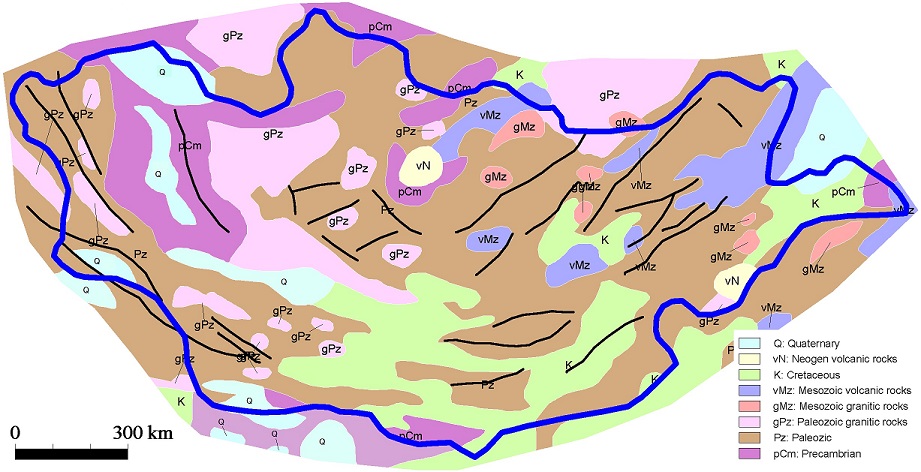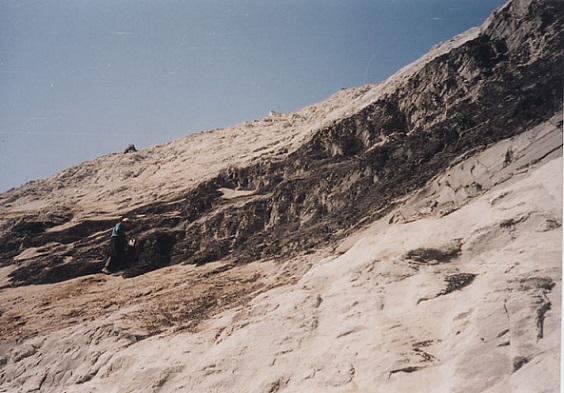Outline of Geology in Mongolia

Fig. 1 Simplified geologic map of Mongolia
This map gives only a brief image of geology in Mongolia.
Mongolia occupies the heart of the Central
Asian Mobile Belt, and an interior portion of the Eurasian Plate.
Precambrian (pCm):
The micro-continental composite blocks containing high-grade rocks constitute a significant proportion of the continental crust of the Central Asian Mobile Belt. The largest of them are named the Dzabkhan, Khangai, Tuvino-Mongolian and Altai.
Paleozoic (Pz):
Paleozoic are divided into Neoproterozoic-Cambrian-Early Ordvician (Caledonian), Ordovician-Early Carboniferous (Hercynian) and Carboniferous-Permian (Indosinian). Other some Paleozoic strata are considered Superimposed Paleozoic troughs.
Paleozoic granitoids (gPz):
Paleozoic granitoids and related volcanic rocks are products of continental margin magmatism. Some of them are related to porphyry copper deposits.
Mesozoic granitoids (gMz):
Mesozoic granitoids are mostly anorogenic and alkalic. Some of them are related to REE deposits.

Photo 1 Mesozoic granite (Gorkhi)
Mesozoic volcanic rocks (vMz):
Mesozoic volcanic rocks are distributed in
eastern
Jurassic-Cretaceous (K):
Jurassic and Cretaceous strata are non-marine sediments. Dinosaurs fossils have been found in them. Coal deposits in them are mined.

Photo 2 Coal mine (Baganuur)
Cenozoic volcanic rocks (vN):
Cenozoic basalts along deep crustal fractures occur locally. Seismic activity along such fractures continues today.
Quaternary (Q):
Quaternary is non-marine sediment.